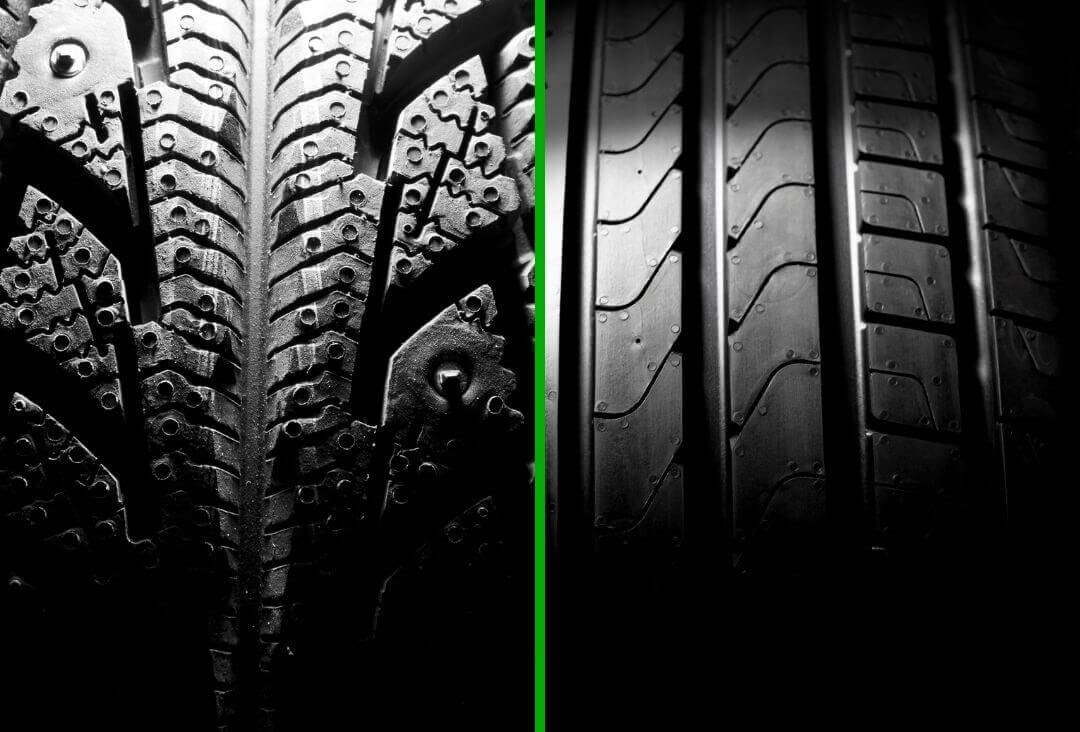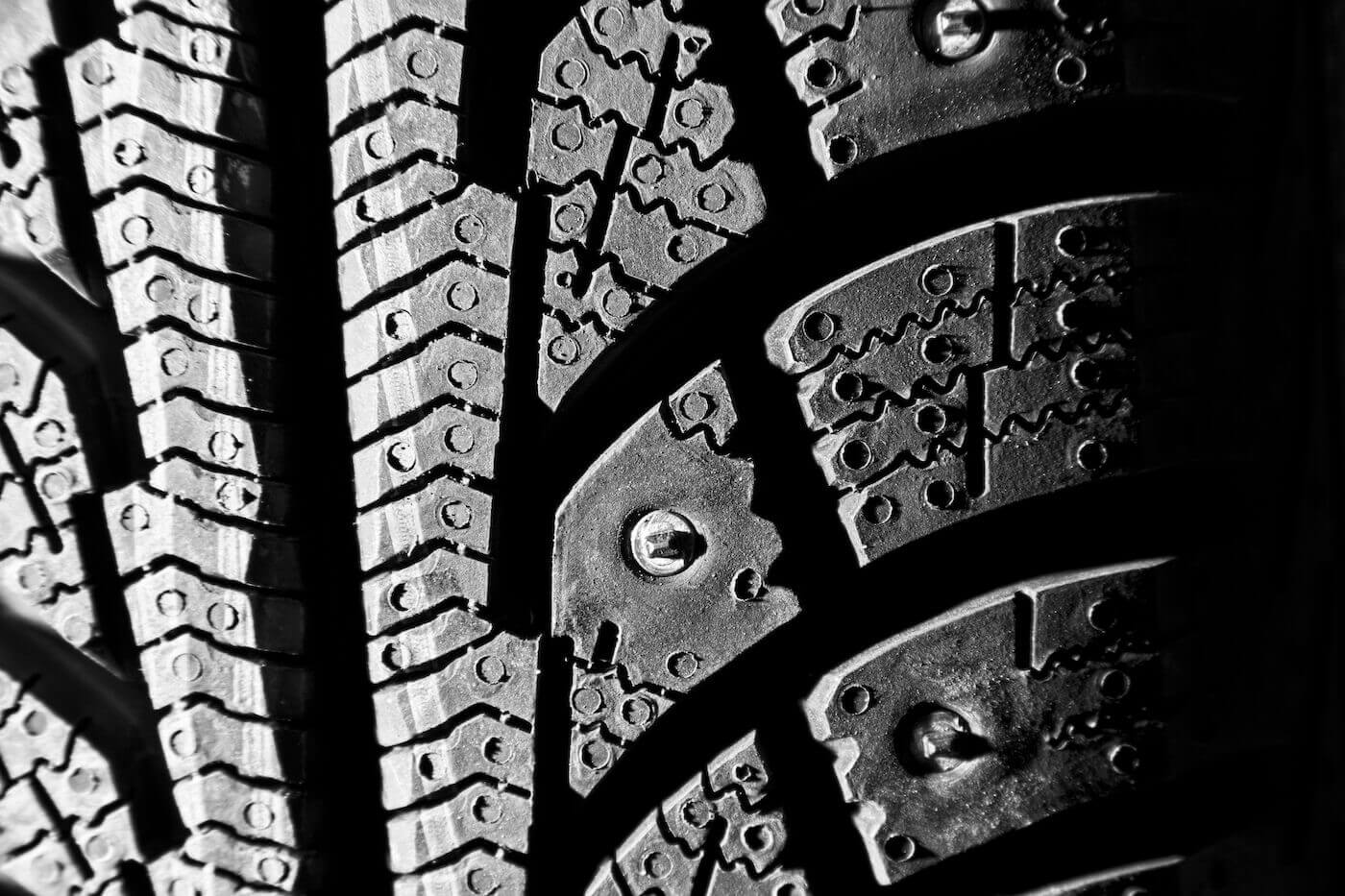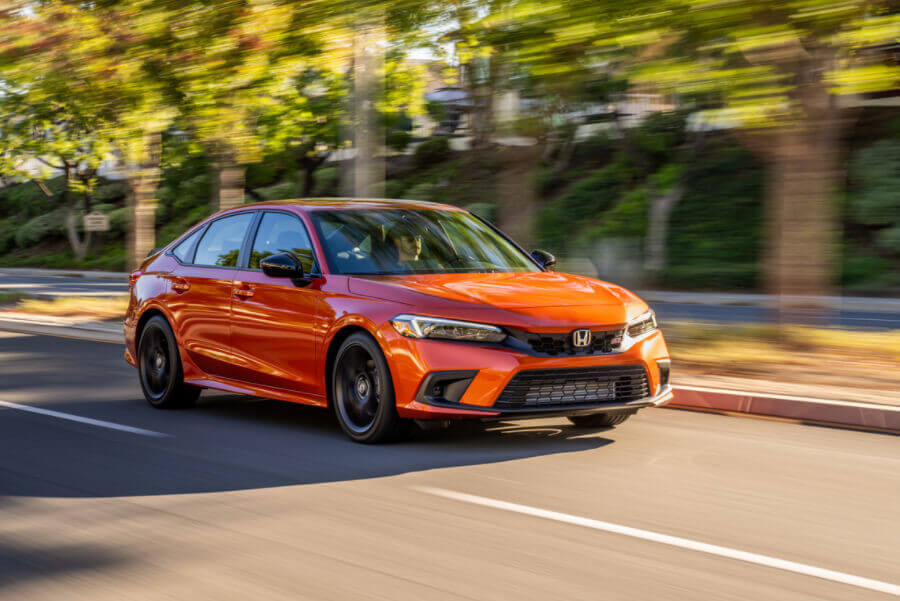For most Canadians, driving in the winter can be hazardous and sometimes downright treacherous. With winter weather conditions including snow, ice and wind – sometimes all at once – many drivers look to outfit their vehicles with plenty of winter snow gear, including buying and installing winter tires. With even more incidents of bad winter weather being reported daily, you might be wondering whether to buy studded vs non studded tires, if you are concerned about keeping yourself and your family members as safe as possible while driving in winter.
The main differences between studded and studless tires
When considering studded vs non-studded tires, it makes sense to look at a number of factors, the most important of which is to think about what the winter driving conditions in your area are like. Certain places in Canada may regularly get hit with lots of snowfall and blustery winds and some may get lots of freezing rain, leading to dangerous ice build up on roads. Or maybe you are one of the lucky ones who experiences all these conditions, sometimes all in one day.
For anyone who has to drive regularly on roads with packed snow, or layers of ice, it may just make sense to buy studded winter tires. This type of snow tire has been engineered specifically so that the tread of the tire can be fitted with small metal – or sometimes hard plastic – studs (little nubs) that can be safely inserted into the tire tread. Most studded winter tires allow for approximately 80-100 studs to be installed per tire.
If you live in an area of Canada that doesn’t get too many incidents of hard packed snow or ice accretion on the roads, then you may be able to get away with just installing a good set of winter tires on your vehicle. Studless tires are the best choice for winter driving conditions that include a combination of slush, snow and ice.
In addition, before you make the choice between studded vs non-studded tires, you should make sure that your area allows them on the road. Most provinces and territories in Canada do allow studded snow tires between certain dates – late fall to early spring in most cases – but studded winter tires are not allowed on roads in southern Ontario.
Studded vs non studded winter tires: Safety
One of the biggest reasons to choose studded over non-studded winter tires is for safety reasons. If you live in the northern area of your province, or near the coasts or other areas that consistently get lots of hard packed snow and ice build up on your roadways, then installing studded snow tires can increase your safety on the roads. How? With studded tires, the metal (or sometimes hard plastic) studs inserted into the tread will help grip snowy and icy roads with intensity – much more than a regular snow tire.
Studded vs non studded tires: Road Handling
If you are looking at buying studded vs non studded tires, you also might be wondering how both these kinds of tires handle the roads. It’s important to note that studded tires are meant to be used only in the winter time, and perform most admirably on hard packed snow and ice. This is because the tiny studs that get inserted into the tire tread on a studded tire are designed to help the tire tread grip this kind of roadway even more closely than regular, non-studded winter tires. However, if you drive studded tires on dry, clean roadways, make sure that it is only in cold conditions. Winter tires – both studded and non-studded are manufactured using softer tire compounds, to ensure that the tire stays softer and “grippy” in the cold temperatures. If you drive studded winter tires in warmer and drier weather, you will wear out the tires faster, and you may be bothered by road noise created by the studs.
As well, you can also be fined for driving studded tires outside of the recommended date range in your province or territory, as these tires can cause damage to the roads.
How do studded vs non studded tires perform in specific weather conditions?
On snow
Both studded and non-studded winter tires perform suitably on snow. However, if you live in an area of Canada where you get slushy, wet, intermittent snow on your roadways, it may be possible to get through the winter safely by investing in a quality set of winter tires. However, if you live in an area where snow comes down quickly and packs on roadways (or you live in an area where snowplows and snow removal is not as common), or you get significant ice build up (very common on the coastlines and near large bodies of water) then it is better to buy and install a set of studded winter tires.
On ice
If you ask most drivers, many would say that ice is the most dangerous type of surface to drive on in winter. There can be many different types of ice on roadways in winter as well – including black ice, freezing rain, slush that has begun to freeze and more. If your winter weather driving conditions are only occasionally plagued by ice, then driving carefully with a good set of winter tires should work – especially if you mostly encounter slushy conditions.
Now, if you live in an area when ice builds up on the roads quickly and thickly, then you need to install a set of studded winter tires. Studded tires can help increase grip and traction on significantly icy roads, and increase the safety levels of both yourself as a driver, and for your passengers and family members. Studded tires are also a must for anyone who works helping with snow clearance as part of their job in the winter (except in southern Ontario where studded tires are against the law).
Dry pavement
If you are curious as to how studded vs non studded tires work on dry pavement, then here is some information for you. Non-studded tires are best for driving on dry pavement – and if that pavement is extremely cold – but dry – then you can be assured your non studded winter tires will grip the cold roadways better than all season or any other type of tire. This is because winter tires are made from a more malleable rubber compound that keeps its grip even in very cold dry conditions. In terms of driving on dry pavement with studded tires – this is not recommended. For one, if you continually drive studded tires on dry pavement you will wear out the tire tread more quickly. Secondly, you could also be bothered by significant road noise from the tire studs meeting the roadway.
Road noise
Of course, due to the presence of studs in the tread of studded tires, you will experience more road noise than an average tire – and this noise is more prominent if the roadway is fairly free of ice and snow. The sound from studded tires driving on ice and snow is variable, but this noise means that the studs are doing their job by gripping into the icy roadway – which should make you feel better. Non-studded winter tires may also be noisy, but it truly depends by the depth and ruggedness of the tread. For example, very deeply treaded off road winter tires (on a Jeep or similar vehicle) with heavy lugs, will make a significant amount of road noise when driven on any roadway.
If you are concerned about tire wear in your studded vs non-studded tires, then research shows that as long as you properly maintain your winter tires then treadwear on both these types of tires should be relatively the same. Of course, if you buy a higher quality tire, then tread wear on your studded and non-studded tire should be better than a more bargain-brand winter tire. Tire wear is not as affected by the presence of studs or not, but more by maintaining proper inflation, adhering to rotation schedules, and not driving winter tires in warm weather.
Are studded tires more expensive?
It is important to note that studded winter tires are somewhat more expensive than non-studded tires. This is to be expected, as studded winter tires have been specially manufactured with tread that can hold the installed studs – and of course, the cost of the studs themselves. However, it’s never wise to put a price on safety, and if you live in an area where driving on a set of studded tires will increase your vehicle’s grip in ice and snow, then isn’t that worth the peace of mind?
So, if you are in the market for a new set of winter tires, and you are comparing studded vs non studded tires, there are a variety of factors available to help make this decision. And, if you need additional help, then you can feel free to reach out to the expert team at blackcircles.ca – one of the most popular online tire retailers in Canada. Our friendly, easy-to-reach team will be able to help you make a decision on the best set of winter tires for your car and driving lifestyle.






